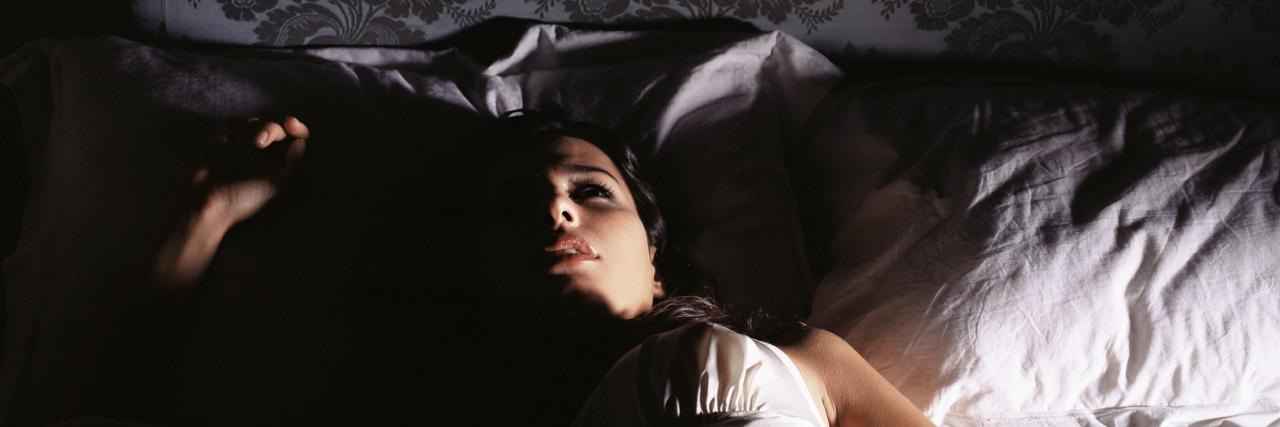During the second trimester of my pregnancy in 2010, I experienced sleep paralysis for the first time. I shook it off, convincing myself it was no more than an eerie nightmare. Let’s face it, sleep disturbances amid pregnancy are practically customary. I proceeded to be plagued by these events several times a night. These occurrences were not your run-of-the-mill bad dreams. I lose all ability to move or speak, yet my brain is fully aware. Only my eyes are capable of movement. They can open and close, in conjunction with using my peripheral vision to glance around my bedroom.
Horror movies continue to portray sleep paralysis as a form of possession. There are no demons involved, I assure you. In Scandinavian folklore dating back to the 1600s, sleep paralysis is said to be the result of a supernatural entity; a damned woman known as the “night hag.” She frequents the homes of townsfolk, sitting on their rib cage’s while they rest peacefully in a deep slumber; rendering them immobilized. Asia, Africa, Europe and some states within the U.S. have procured their own variation of this old wives’ tale. Tying together the prevalence of recent sleep paralysis-themed horror films such as “Mara” and “Dead Awake” with ancient folklore spread throughout the world leads us to view this genuine sleep disorder as a rare phenomena. Actually, it is extremely common. According to the Mayo Clinic, more than 3 million cases are reported every year in the U.S.
While sleep paralysis is not an act of demonic possession, it is frightfully disconcerting. At the outset, I would repeatedly attempt to scream, with the objective of awaking my then-husband. I recall aggressively trying to move my limbs; to no avail. There is no feasible way to gauge time while in this state; it feels endless. Being utterly unaware of when I would regain full-range of motion induced panic. The Stanford Health Clinic has stated that sleep paralysis typically lasts for several seconds to several minutes. Upon fully awakening, I felt exhausted, drained from the immense physical exertion I had extended in efforts to move my body. I considered the illogical possibility that my heart might pound right out of my chest due to the anxiety paralysis precipitates.
With sleep deprivation listed as a potential cause, it made good sense as to why I first endured this unnerving disorder during my pregnancy. The increasing amount of occurrences became overwhelming. I underwent anticipatory anxiety during daytime hours, having full knowledge of what was to come in the dead of night. My bedtime routine was once tranquil and free of interruption; I relished the eight consecutive hours of sleep I once took for granted. This was no longer the case. I dreaded falling asleep. In fact, I lived in fear of it.
I scheduled an appointment with a sleep clinic some years back. Two nights in succession, I slept on the most comfortable mattress known to man while hooked up to dozens of wires. Not so cozy. The sleep study informed me that cycling properly through the stages of sleep is not my strong suit. I spend a prodigious duration of time in REM sleep, resulting in fatigue during waking hours. Aside from that remarkable discovery, my diagnosis was confirmed: sleep paralysis. This condition is deemed self-diagnosable, yet for some reason I felt the need for confirmation from a sleep doctor.
As far as treatment options went, I was prescribed a tricyclic antidepressant that is commonly used to regulate sleep cycles. Effective? Eh, not that I’ve noticed. As for sleep paralysis, the main treatment is improving sleep hygiene. Routine is crucial. No caffeine, television or cell phone use in the evening. Going to sleep at the same time every night, in a distraction-free environment was highly recommended.
The doctor gave me one last piece of advice before I exited his office. He told me that I hold all the control required. By constantly trying to shout and shake my paralyzed body, I was allowing this disorder to riddle me with anxiety. He suggested slowly wiggling toes and fingers, a tried-and-true method that has proven successful in many instances.
Over the past decade, I’ve habituated to these reoccurring episodes of sleep paralysis. Since the finger-wiggling trick does not always work, I began incorporating different forms of breathwork to reduce my panic levels while laying in bed frozen. Upholding a regular yoga and meditation practice has been essential in fighting the fear. I am capable of slowing down my own heart rate by lengthening my inhalations and exhalations. I am mindful of the fact that I will be able to move my body again. Everything in life is impermanent; thus I will not be perpetually paralyzed.
As I also have generalized anxiety disorder, I recently found out mental illness is a potential cause of this sleep disorder. My psychiatrist prescribed me an anti-anxiety medication, which I later found out is used off-label for treating sleep paralysis. It isn’t a cure, by any means. I still encounter episodes a few times a week, but this has been a relief from nightly episodes. I refuse to allow sleep paralysis to affect my quality of life the way I once did. On nights where I am feeling apprehensive, I remind myself that I am in control.
Getty photo by Image Source.

